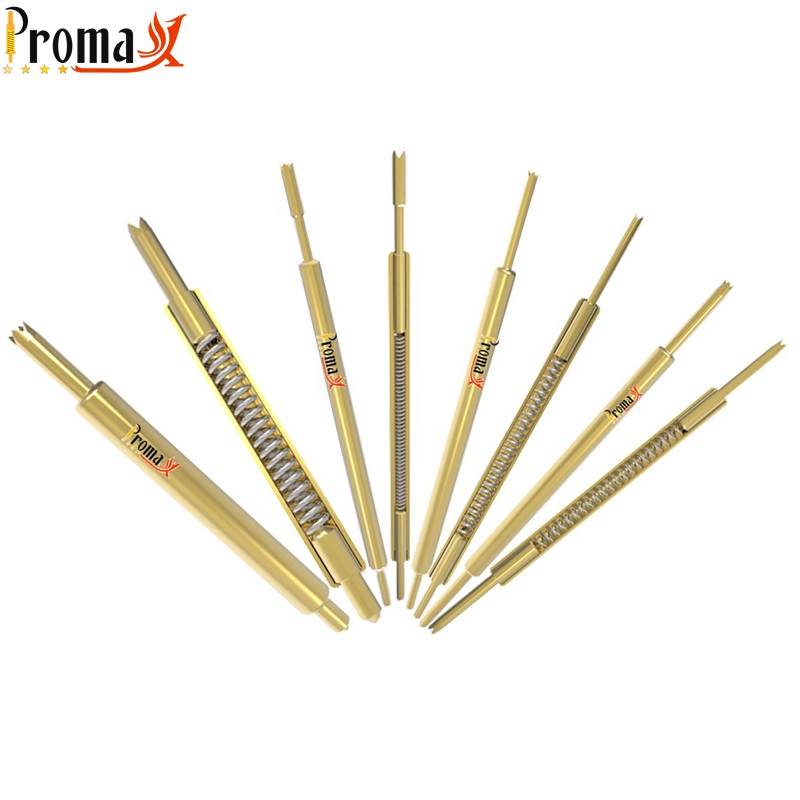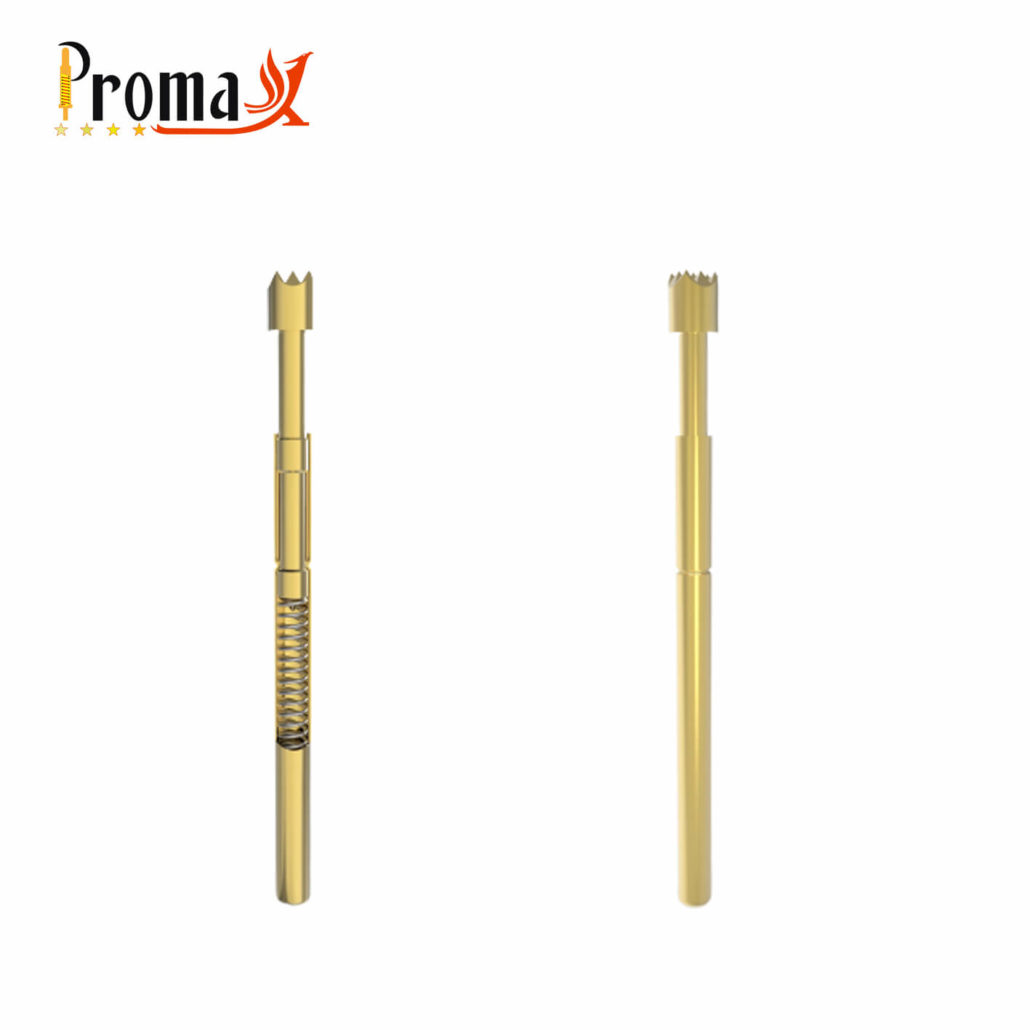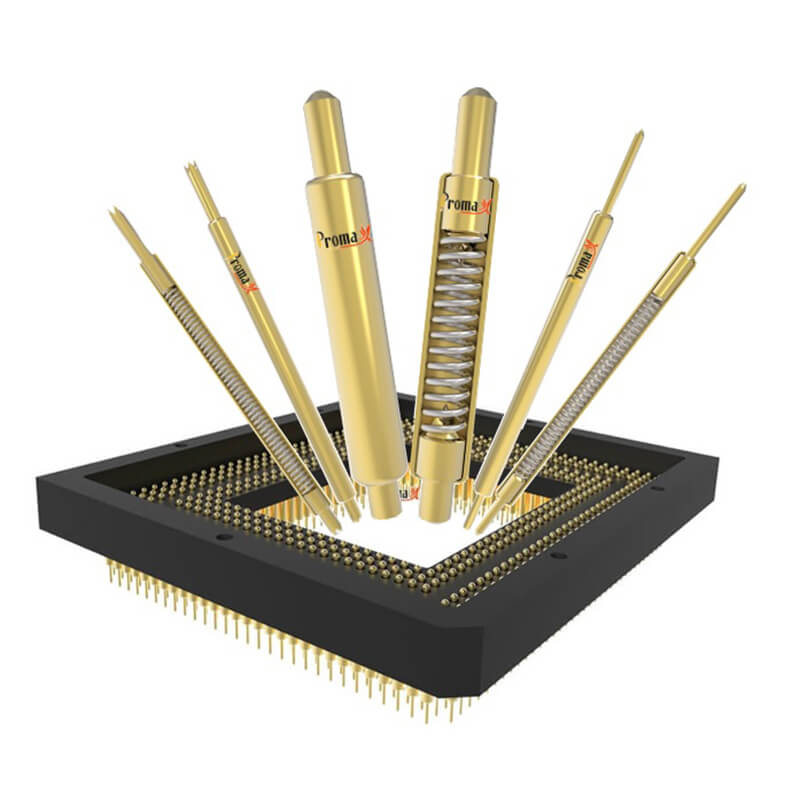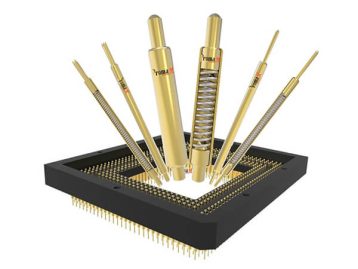Welcome to the world of spring probes!
Spring probes are special types of probes that are used in a wide range of industries. They are used to measure and test the performance of electrical components by providing a secure and reliable connection. In this blog article, we will be taking an in-depth look at different types of spring probes, the benefits they offer, and how they are used in various industries. So, let’s get started!

Introduction to Spring Probes
The current electrical goods need a tool to rectify the circuit and its problems. They are emerging towards the trend of simplified installation and refinement, along with a long maintenance life. The Pogo spring test probe connector is small and has a telescopic design, which can well meet the needs of current electronic and electrical products.
The Spring Probes are indispensable tools for those who work with electronics and other devices that need to be tested before use. They are great for making connecting conductive and propagative signals. The probe can be used to check for electrical current or resistance in the wire or printed circuit board (PCB) of a device.
To use the probe, attach it to the end of a wire and touch the two probes together; this will show if there is power running through the wire by lighting up the LED bulb.
Types Of Spring Test Probes
Different types of Spring Test Probes are classified according to their functionalities.
-
ICT Probe
In-circuit Test Probe is a convenient tool for evaluating the components of an assembly. It identifies the faulty ones rapidly and isolates them from the rest of the circuit, making function testing (FCT) easier to carry out and enabling verification of the electrical performance of the system.
-
Interface probe
With its one-of-a-kind configuration, Interface pogo probes are the go-to tool for assessing the contact points and surfaces of test fixtures. This specialized working equipment is perfect for customers needing to check test rigs or who have larger set-ups.
-
Switch Probe
Using a switch probe, electrical current is transmitted through two paths to determine if any non-conductive materials, such as connectors or components, are present in the circuit.
-
High-frequency Probe
High-Frequency Probe has remarkable capabilities for assessing high-frequency signals. It is the perfect component to expand port functions in a circuit or network analyzer, allowing measurement of frequency signals up to 500 MHz without a shielding ring.
-
Rotating Probe
Instead of the conventional method for testing elements on a circuit board, rotating probes provide a viable option by introducing a mechanized approach that physically inserts the probe into the hole. This type of examination is especially common in Printed Circuit Board Assembly (PCBA) tests.
-
High Current Probe
The distinctive jagged shape of high-current probes makes them exceptionally adept at measuring current in a circuit. Able to bear currents ranging from 3 up to 150 amps or even more, these devices prove invaluable.
-
Battery Probes
Battery probes are a great option when there is a circuit that has both data and power applications because they can handle high insertion life and high system tolerance capability. They are an excellent way to avoid mixed signals that could potentially corrupt the data being collected or send a surge of power through the lines and disrupt any other devices connected to it.
-
Wire Harness Probe
Motorboats, cars, and other electric vehicles usually rely on wire harness tests for production. This test is a crucial step in the manufacture of motor-related products and can be conducted by a wire harness probe.
-
General purpose probes
General-purpose probes are essential for industrial applications and cannot be swapped out without detriment to the component, since they have been permanently attached to it from within, making it unfeasible to remove.

Benefits of Spring Probes
Spring probes offer several advantages over traditional probes.
- They are highly reliable, as they provide a secure connection with minimal contact force.
- Spring probes are flexible, too – able to be configured for various uses. They can handle high-frequency signals and high-voltage signals, making them ideal for testing sensitive components.
- Moreover, they are affordable and reusable, even when subjected to wear and tear.
- Finally, spring probes are designed to be robust and durable. They are resistant to corrosion and can withstand extreme temperatures and vibration.
Common Applications of Spring Probes
Spring Probes have many uses, including in multiple industries; they’re often found in the automotive, medical, aerospace, electronics, construction, or robotics industry.
-
The Automotive Industry
Spring probes are used in the automotive industry to test the performance of automotive components. They are used to test the electrical performance of fuel injectors, sensors, and other electrical components.
-
The Aerospace Industry
In the aerospace industry, spring probes are used to test the aerospace components such as valves and actuators. They can also be used to test the performance of avionics systems and aircraft engines.
-
The Medical Industry
Spring probes, in the medical industry, are used to test the performance of medical instruments such as syringes and pumps. Medical implants and prosthetics can be tested through their uses.
-
The Electronics Industry
In the electronics industry, spring probes are used to test the performance of electronic components such as transistors and capacitors in PCBs (printed circuit boards).
-
The Construction Industry
Spring probes are used in the construction industry to test the performance of construction materials such as steel and concrete. They are also used to test the building components such as pipes and wires.
-
The Robotics Industry
In the robotics industry, spring probes are used to test robotic systems. They can be used to test the performance of robotic arms, sensors, and other components.

Tips For Getting The Most Out of Spring Probes
Using spring probes can be a challenging task. To ensure you are getting the best results from your spring probes, you should keep in mind these simple tips:
- Always use the suitable size and shape of the probe for your application.
- Ensure you are using the appropriate material of probe for your application.
- Use the proper contact force for your application.
- Always use the appropriate tools and techniques for connecting the probe to the test point.
- Follow safety procedures when handling and using the probe.
Challenges with Spring Probes
Using spring probes can be a challenging task. Here are some problems, people usually encounter when using spring probes:
-
Improper Size And Shape Of Probes
If the size and shape of the probe are incorrect, it can cause the probe to slip or fail to make contact with the test point.
-
Wrong Material Of Probes
If the material of the probe is incorrect, it can cause the probe to corrode or fail to make contact with the test point.
-
Inaccurate Contact Force Of Probes
If the contact force of the probe is incorrect, it can cause the probe to slip or fail to make contact with the test point.
-
Improper Handling And Use Of Probes
If the probe is not handled or used properly, it can cause the probe to fail or fail to make contact with the test point.
-
Poorly Designed Probes
If the probe is poorly designed, it can cause the probe to fail or fail to make contact with the test point.

Troubleshooting Spring Probes
If you are having problems with your spring probes, there are several troubleshooting steps you can take.
- The first step is to inspect the probe for any defects or damage. If the probe is damaged, it is crucial to replace it immediately.
- Then, it is vital to ensure the size and shape of the probe are appropriate for the test point.
- The third step is to check the material of the probe. Assure the material of the probe is appropriate for the test point.
- The fourth step is to check the contact force of the probe. Ensure the contact force of the probe is appropriate for the test point.
- The fifth step is to check the tools and techniques used to connect the probe to the test point.
- Finally, ensure the safety procedures used when handling and using the probe are suitable.
Choosing The Best Spring Probes
Choosing spring probes can be hard. Here are some of the most important design considerations to keep in mind:
-
Size And Shape
The size and shape of the probe should match that of the test point.
-
Material
The material of the probe should be determined by the application. Different materials can provide different levels of resistance, so it is important to select the right material for the application.
-
Contact Force
The contact force of the probe should be determined by the application. Different contact forces can provide different levels of performance, so it is paramount to choose the proper contact force for the application.
-
Connectors
The connectors used to connect the probe to the test point should be determined by the application. Different connectors can provide different levels of performance, so it is vital to choose the proper connectors for the application.
-
Safety
The safety procedures used when handling and using the probe should be determined by the application. Different safety procedures can provide different levels of safety, so choose the right safety procedures for the application.

Conclusion
Spring probes are special types of probes that are used in a wide range of industries. They are designed to be robust, reliable, and flexible and can handle high-frequency and high-voltage signals. Their nature of being highly reliable, cost-effective, and flexible, makes them ideal for testing sensitive components. In this blog article, we took an in-depth look at different types of spring probes and how they are used in various industries.
So, if you’re looking for a reliable and cost-effective way to test electrical components, spring probes are the way to go!
 Over 15 Years of Expertise
Over 15 Years of Expertise FREE samples provided to ensure product satisfaction
FREE samples provided to ensure product satisfaction Rapid Turnaround: Mass Production Complete in 15 - 20 Days
Rapid Turnaround: Mass Production Complete in 15 - 20 Days












